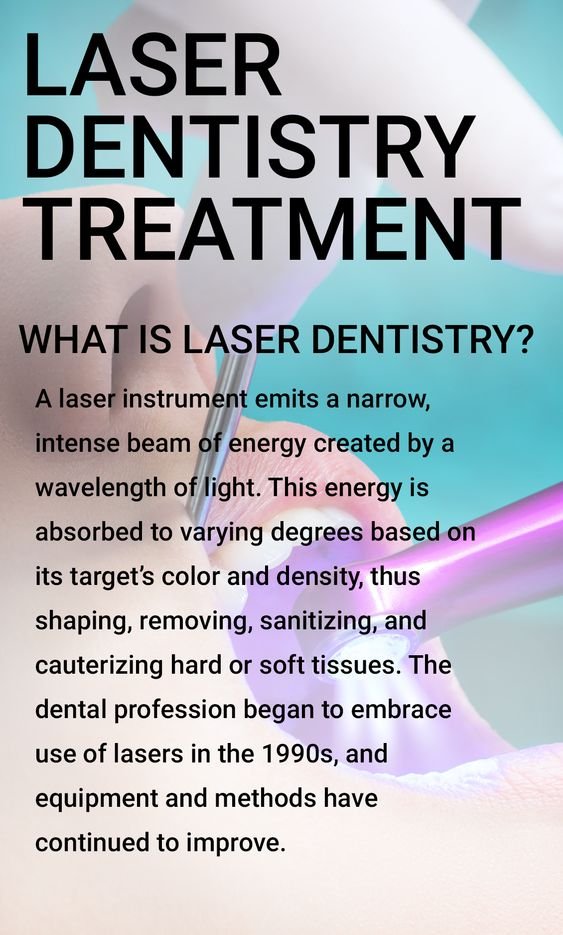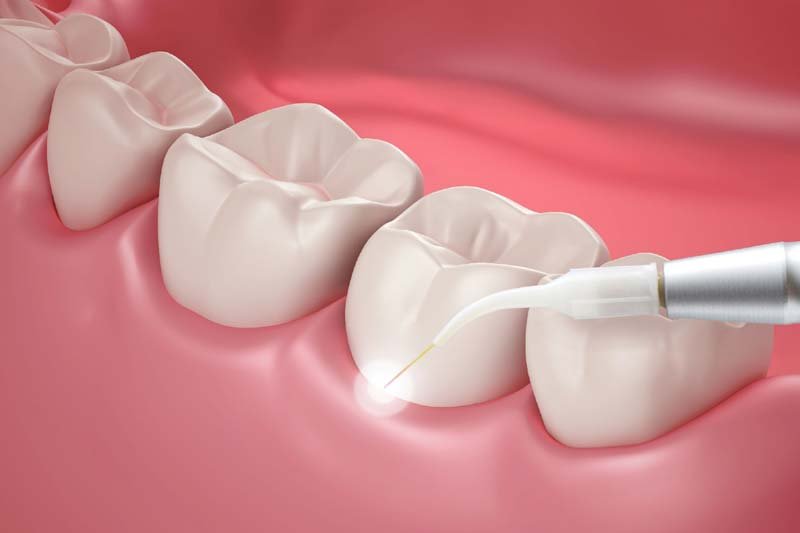How does laser treatment work in dentistry? Laser treatment for teeth has been in dentistry for almost 25 years, and they have resolved several dental issues. But despite FDA approval, none of the laser treatment systems have got the seal from the American Dental Association. This means that they don’t accept laser treatment for teeth and prefer traditional options.
The ADA seal assures that dentists have the best of product and equipment to live up to the standards of safety. However, ADA is optimistic about laser technology and the role it plays in dentistry. The lasers are different from cold lasers and used as phototherapy for relieving pain, headache, and inflammation. You can avail complete family dental care and best quality services at https://www.aestheticfamilydentistry.com
How to dentists use laser treatment?
The following treatments are possible with laser technology:
- Tooth decay: we can use the laser for removing decay within the tooth and then help the enamel fill.
- Gum disease: the treatment can reshape gums and also remove bacteria during a root canal.
- Biopsy: lasers work towards removing small pieces of tissues called biopsy. It helps determine or examine cancerous cells.
- Lesion removal: laser works towards removing lesions in our mouth and reduce pain from canker sores.
- Whitening teeth: the process also helps in making teeth whiter. Dentists use peroxide bleaching solution that is applied on the surface of the tooth, and a laser activates it. This helps speed up the whitening process.
How do lasers work in dentistry?
Lasers work by delivering energy like light. When it is used for the dental and surgical procedure, laser works like cutting instrument or like a vaporizer for tissues that it comes in contact with. When this is used for teeth-whitening, laser acts as a source of heat and improves the effect of tooth-bleaching agents.
Types of Dental Lasers
The following options give you an idea of the kind of laser treatment you can avail:
-
Hard tissue laser
The laser treatment is a wavelength and is highly absorbed by hydroxyapatite and water. It makes them useful to cut through tooth structure. Hard tissue lasers include Erbium YAG and Erbium chromium YSGG. Primarily, the use of hard tissue lasers cut into teeth and bone with precision. The hard tissue lasers help to shape or prep the teeth towards composite bonding.
-
Soft tissue lasers
Soft tissue laser boasts of a wavelength that is absorbable by hemoglobin and water and makes it useful for soft tissue management. Neodymium YAG and diode lasers are commonly used for periodontal treatment. It kills bacteria and activates tissue re-growth. Carbon-dioxide laser minimizes the damage of surrounding tissue and removes faster growth of tissues compared to fiber optic method.
The soft tissue laser penetrates while sealing blood vessels and nerve endings. It is the primary reason why most people don’t experience postoperative pain after laser treatment. The soft tissue lasers help you heal quickly. For this reason, laser treatments have become standard and soft tissue is quite famous for gingival sculpting.
Some dental technologies have been developed and can generate both soft and hard tissues. Additionally, this remedy is used for shaping, cutting, and prepping up soft tissues. Some laser treatments add energy, protein, and move messages from one cell to another to improve our natural ability to heal damaged cells.
Pros and cons of using a laser in dentistry
Although a company like Drescher & Cohen DDS can offer you the best laser treatment for your teeth. You need to know the pros and cons that come in general. This will help you understand this treatment better and why you should go ahead with it.
Pros
Compared to old dental practices of dental drills:
- Laser treatment is less painful and sometimes reduces the need for anesthesia
- It can reduce anxiety in patients and is uncomfortable due to dental drills
- The process reduces swelling, bleeding, during the tissue treatment
- It preserves healthy tooth and removes cavities
Cons
Disadvantages of laser treatments are:
- Lasers cannot be used for filling that is already there
- Doesn’t work for many common dental practices. For example, filling cavities located between teeth, large hole, old filling, and more.
- Lasers can’t remove the defective crown, silver filling, and prepares teeth for bridges
- Traditional drills could be needed to shape filling, adjust bite, and polish stuffing when the laser is used
- Lasers require anesthesia like traditional practices
- Laser is an expensive treatment and tends to charge you way more than dental drills. Regular treatment can be around $600, but laser treatment can be more than $100,000
Every type of medication comes with a set of pros and cons. You need to understand what works for you and if it is good for your teeth or not. An expert dental care specialist will determine your dental condition and then approve of such treatment. Make sure you turn to the best in town to get quality treatments.
Related Videos about How does laser treatment work in dentistry :
Periodontitis – GP Dental Laser System 4×4
How does the Dental Laser work
Dental Laser Treatment – Wide Range Of Dental Laser Procedures
Deep Cleaning with Laser Treatment
How Does Laser Surgery Work? Treat Gum Disease – LANAP
What are the Advantages of Laser Gum Treatment?
Related Videos about How does laser treatment work in dentistry :


How does laser treatment work in dentistry?
dental laser treatment side effects, dental laser treatment cost, laser dentistry for cavities, lasers in dentistry pdf, lasers in dentistry ppt, benefits of laser dentistry, pros and cons of laser dentistry, lasers in dentistry articles, laser treatment work in dentistry




